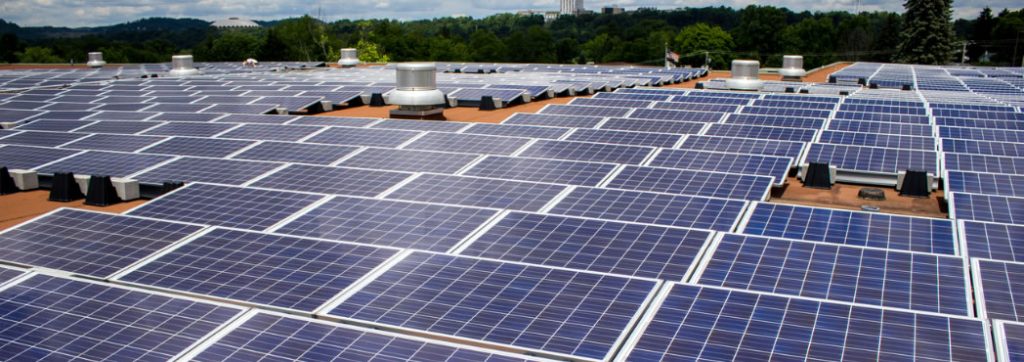In my last post, I promised to take a closer look at the measures you should take to minimize your demand charges where solar is providing a significant portion of the power consumed, but I need to start by explaining one of the problems created by introducing solar into your system.
kVAr and Power Factor.
To understand the problem we probably need to review the principle of power factor. This will be a superficial review but if you want to study it in greater depth, there are many resources readily available through a quick Google search online.
Power Factor Triangle
There are inefficiencies in every power system. The amount of power required to complete a job must be increased to compensate for those inefficiencies. In the power triangle above, Real Power represents what would be required in an ideal world to do a job, Apparent Power represents what is needed to do the job and compensate for inefficiencies, and Reactive Power represents what is required to make up for the difference. This is always a right triangle so as the Power Factor Angle increases, the Apparent Power and Reactive Power lines on the triangle grow longer – representing less efficiency and the requirement to compensate at a higher level.
Conversely, as the angle approaches zero, so does the length of the Reactive Power side of the triangle and the Apparent Power side approaches the same length as the Real Power side. A perfect Power Factor Angle is 0 degrees which results in zero kVAr or Reactive Power and in Real Power being equal to Apparent Power. Expressed as a percentage, that gives you a power factor of 100% where Real Power is equal to or 100% of Apparent Power.
kVAr and Your Power Bill.
The power utilities generally determine your power factor through a calculation involving the amount of kVAr they have to supply. This is then converted into a kVA number and is billed at the demand rate. If you can do power factor correction within your facility, you can reduce the amount of kVAr supplied by the power utility and reduce the demand portion of your bill by eliminating the power factor penalty. (It also helps reduce heat in your system and improves the longevity of motors, breakers, and transformers.)
kVAr and Solar.
So, how does this relate to the power supplied by your solar array?
- Solar power systems do not generate any reactive power or kVAr. Since more of your utilized power is now coming from solar, there will be a drop in power factor as a result of its inability to generate kVAr.
- More specifically, many power company meters calculate power factor as a function of the ratio between kVArh and kWh. If you have solar, however, any kWh generated by the solar array reduces the amount of kWh coming through the meter. Even though the net-metered kWh goes down, the power company still has to provide the same amount of kVArh because the solar system cannot provide it. This throws the equation out of balance resulting in a power factor reading that shows a dramatic decrease in efficiency.
The interesting thing, at least under our local power utility, is that the power companies seem to understand the problem with the calculation, so when they convert customers who have solar arrays over to a net metering rate schedule, the line item on the bill for “power factor penalty” disappears entirely. Their published documentation doesn’t discuss how they handle the reactive power issue, but we know they still have to supply it and we even agree that they have the right to be compensated for it. We have noticed increases in the demand charges, which leads us to believe that they have come up with another method of calculating reactive power charges so they can simply fold them into the demand charges.
Can You Do Anything About It?
The answer is yes! We are seeing that by deploying technology within the facility that provides kVAr and corrects power factor, the demand charges are dropping by an amount comparable to what their power factor penalty would have been. We’re also seeing significant improvements in the efficiency of the solar system. This further supports the notion that if you provide kVAr internally, the power company doesn’t have to supply it or charge you for it.
True Power Electric’s TrueVars power conditioning units provide kVAr, correct power factor and also address another issue unique to solar, which is related to how inverters in solar systems convert DC power to AC. I’ll take a closer look at that problem in the next post. Stay tuned.
